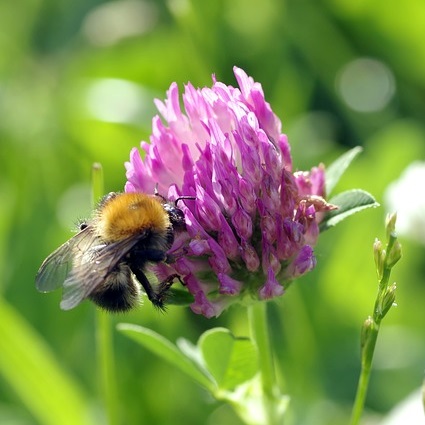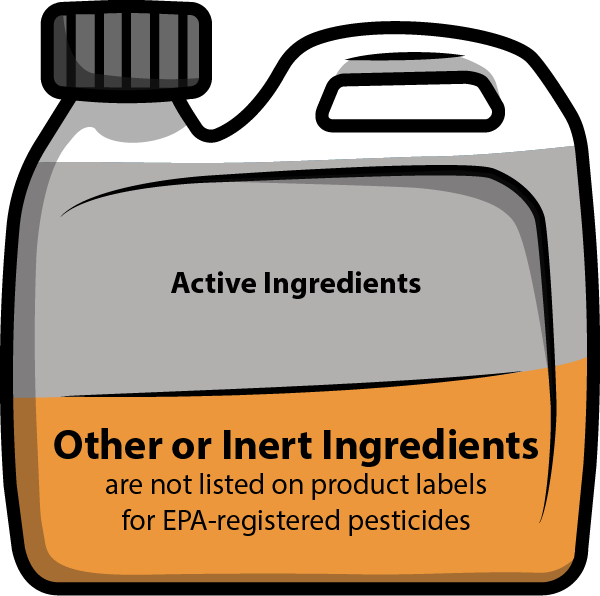Pesticides pose an unjustifiable risk to children, rivers, and streams (refer to our Evidence of Harm section). We urge grounds staff, lawn care professionals, and homeowners to simply remove pesticides (weed killers, insecticides, and fungicides) from their management plan. With minimal maintenance and regular mowing, lawns managed without weed killers are just as aesthetically pleasing as treated lawns, while providing some great benefits.
It may be the case that once weed killers are eliminated, a diversity of plants — in addition to grass — will begin to flourish, creating a healthier, Good Neighbor lawn. Remember, dandelions and violets will not harm anyone, but weed killers do.
In Ontario, Canada, where cosmetic use of lawn pesticides have been banned (since 2008), people have learned to live with diverse lawns. Additionally, New York and Connecticut school grounds, including athletic fields, cannot legally be treated with pesticides.



Depending on your taste, there is a spectrum of lawn management strategies, ranging from low management (basic lawn, park, home) to high management (athletic fields).
The guide on the left provides basic lawn management steps throughout the year without pesticides (any lawn care company can do these for you).
Additionally, in general lawn areas, consider converting certain areas into native Iowa prairie plants (visit the Turf to Prairie section of our website) or rain gardens. Shrubbery and trees may also be a viable choice that provide many benefits, including wildlife habitat. Reducing the size of a lawn may reduce maintenance work and cost, while beautifying your property.
Also consider welcoming, and maybe even seeding, clover in your lawn. It is drought tolerant, durable, and great for soil health.
With the intensive urbanization and land development throughout Iowa, little natural habitat remains. Having biodiversity in our lawns and pollinators habitat in our gardens is the easiest way to help.
The Xerces Society has great information on protecting and providing habitat for pollinators:
For more information, please check out our Resource Library.

While many pesticide-free alternatives are organic, pesticides are often referred to as synthetic organic compounds. If your goal is to maintain a lawn free from herbicides and insecticides, it’s important to always read the labels of the products you use and to learn the names of common pesticide compounds. If you contract with a lawn care company, make sure to ask them about their practices and what, if any, chemicals they may use. Many “Weed and Feed” fertilizers have a combination of the herbicides 2,4-D, Dicamba, and MCPP and/or MCPA listed as active ingredients. These ingredients are also listed on products you purchase in a store, and might look something like the image on the left. Active ingredients are the biologically “active” and is what kills the insect, weed, or fungus. A common grub killer for urban use is a neonicotinoid insecticide (a class of chemicals especially harmful to bees) called imidacloprid.
While there are many other pesticides to avoid in a pesticide-free lawn, these are the most common. Avoiding these pesticides will help keep our environment, and children, safe.

Generally, active ingredients make up a small percentage of the overall product (around 2-3%), so what’s in the rest of your lawn pesticides? “Other ingredients” or “inert ingredients” are typically compounds (sometimes called surfactants) that help pesticides bind to, and get absorbed by, plants and insects. Currently, under the Federal Insecticide, Fungicide and Rodenticide Act (FIFRA), pesticide manufacturers are only required to list the active ingredients in a pesticide (Beyond Pesticides). However, there is evidence showing that these other ingredients are endocrine disruptors themselves–maybe even to a greater degree than the active ingredient– and can cause harm to children and aquatic wildlife. To learn more about inert ingredients, check out this resource from Beyond Pesticides.
For more information, check out these awesome publications, compiled by the Midwest Pesticide Action Center. Although MPAC is no longer active, their well-sourced and researched toolkits, guides and factsheets, that remain exceptional resources for reference. To access their full list of resources, click here. (Note: This link is a copy of MPAC’s resources web page as of Sept. 30, 2019, courtesy of the Internet Archive’s Wayback Machine. Therefore, all of the files may not be available for download)